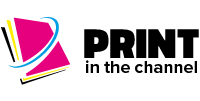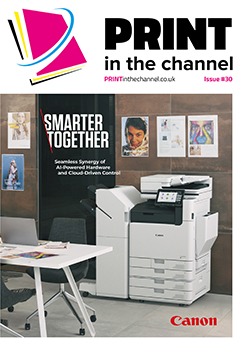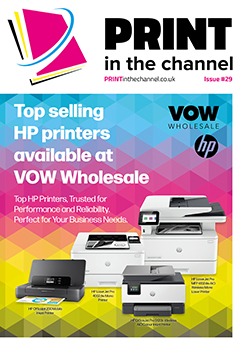Demands for MFPs continues to grow, but what customers demand of them is changing – including an increasing move to the cloud – and this provides resellers with opportunities to capitalise on.
As the lockdowns of the pandemic become a fading memory, gradually more people are returning to the office. Recruitment company Hays reported in October last year that 43% of office workers had returned to the office, with 39% maintaining hybrid arrangements.
One byproduct of this return is that more businesses are now looking to buy multifunction printers (MFPs) for the office.
Russell Pirie, regional sales director at Ricoh UK, says that demand for MFPs in the UK has steadily grown. “This resurgence is a result of shifting work patterns, as more businesses have employees returning to the office,” he says. “The ‘new way of working’, characterised by a hybrid model with office presence typically occurring on Tuesdays, Wednesdays and Thursdays, has necessitated increased access to office technology to support productivity and collaboration.
“All sectors of the market are showing great signs of recovery and as more employees come into the office, businesses can benefit from having robust multifunction printers on hand to improve efficiency and workflow.”
Peter Dresser, product marketing manager at Kyocera Document Solutions UK, notes that the demand for A4 colour MFPs in the UK and Ireland has increased by 32.1% year on year and the A3 colour MFP market has grown by 12.2% for the same period.
He says there are several reasons for this increase. “End users are looking to replace aging devices after ‘sweating’ these assets during the economic uncertainty brought about by the COVID pandemic,” he says. “In addition, end users want the very latest technology, particularly focusing on updated security features.”
He adds that customers also want technology that incorporates energy saving and environmental features and are likely to be focusing on the carbon neutrality of devices and manufacturers.
“It is difficult to say which specific sectors are buying new devices as it seems to be common through all verticals,” he adds.
Arjan Paulussen, managing director Lexmark UK, Western Europe and English-speaking Africa, agrees that demand for MFPs is growing is across most, if not all, industries. “Clearly, there will always be applications for which a single function printer is more suited, many of these where print forms an integral and critical part of the value chain, like printing of bills of lading within a logistics company,” he says.
“The main drivers for the proliferation of MFPs are decentralisation and digitisation, with modern work environments being more decentralised and heterogeneous than ever – this trend started before COVID due to digitisation and has been further intensified by the pandemic. Multifunctional devices form the basis of digitisation. They are the interface between paper-based and digital document management processes and, in combination with the cloud, make hybrid working possible in the first place.”
Cloud influence
Arjan adds that cloud technology is high on the agenda for many businesses, and MFPs have an important role in the general move by businesses of all sectors to the cloud.
“Customers expect the same level of print quality, security and service on every device, in every network environment and at every location,” he says. “MFPs support a robust security offering for endpoint protections and system hardening.
“Cloud technology offers flexible solutions that the industry needs to be optimally prepared for the dynamic and digital developments of our time. Cloud scan management, for example, enables further digitisation as it allows for easy conversion of physical documents into a digital format by scanning them directly into a cloud-based file-sharing system, avoiding delays and rework.”
Arjan adds that cloud technology enables location-independent and cost-efficient work with maximum security at the same time. “It is also an integral part of the ‘Next-Gen Print Infrastructure as a Service’ (NGPIS) strategy,” he adds. “NGPIS removes the print server infrastructure from its previous physical environment. The provision and maintenance of print servers is no longer necessary. This not only relieves the IT department of a large part of its operational business, freeing up capacity for strategic projects, it also results in significant cost savings and the print infrastructure is always up to date.”
James Turner, WPS field expert UK and Ireland, Workplace Solutions, Xerox, adds that it also enables integration with cloud platforms. “MFPs are being designed to integrate seamlessly with popular cloud platforms like Google Drive, Dropbox and Microsoft OneDrive,” he says. “This allows users to directly print, scan and share documents to and from these platforms, streamlining workflows and enhancing collaboration.”
There are various other benefits of utilising the cloud, he adds. “Cloud printing enables printing from mobile devices like smartphones and tablets,” he says. “There is continued development of features like mobile apps and compatibility with mobile printing protocols to facilitate this functionality.
“Cloud platforms also offer valuable data analytics on printing habits, toner usage and device performance. MFPs are being equipped with features that collect and transmit this data to the cloud, enabling businesses to optimise printing costs, identify usage patterns and improve overall management.
“Cloud-based printing can facilitate subscription-based models where users pay per print or subscribe to specific usage plans. MFPs are being developed with the capability to integrate with such models, offering greater flexibility and cost control for businesses.
“Overall, the shift towards cloud-based solutions is driving the development of MFPs towards becoming more connected, secure and integrated with cloud platforms and mobile devices. This allows for efficient document management, streamlined workflows, and cost-effective printing solutions.”
Trends
While cloud is a major shift for customers, there are other significant trends that resellers should be aware of. Deyon Antoine, product marketing manager at Toshiba Tec, adds that security is increasingly key for customers when considering MFPs. “Customers are looking for more secure devices to protect themselves against data loss and malicious attacks,” he says.
“MFPs have had to keep up with the changing expectations of our customers, by being cloud ready and app-driven. Security is a big thing as MFPs are no longer on a closed network and must have access to the web, cloud services, mobile printing and remote management. They also need to be able to facilitate the needs of hybrid workers.”
James adds there is a growing focus on zero trust. “Data breaches and information security are rising concerns across industries,” he says. “Clients are demanding MFPs with robust security features like user authentication, encryption and document access control to protect sensitive information.”
He adds that demand for connected MFPs that integrate seamlessly with cloud platforms and mobile devices is rising. “This allows for remote printing, scanning and document sharing, enhancing workflow efficiency and flexibility.”
Allied to this, customers are also increasingly seeking enhanced user experiences, James adds. “User-friendly interfaces, intuitive controls and touchscreens are becoming essential for MFPs,” he says. “Clients expect a seamless and hassle-free experience when interacting with these devices.”
Russell adds that Ricoh has seen a growing demand for their MFPs to be equipped with RSI connectors, a platform that provides cloud-based apps and document workflow integration across devices. “Customers are also having conversations around EDM and adopting solutions like DocuWare Cloud to speed up business processes and create efficiencies.
“Sustainability has become another priority in shaping customer decision-making,” he says. “To reduce environmental impact, companies are replacing older fleets with new efficient models such as the IM C range, which offer a sustainable approach for customers to improve their ESG credentials and reduce their carbon footprint.”
Maximising selling MFP opportunities
With demand growing for MFPs, there are plenty of selling opportunities for resellers, but they need to ensure they maximise them. To do this, certain qualities of MFPs should be highlighted.
“Highlight the MFPs’ speed, reliability and efficiency in handling various printing, scanning and copying tasks,” suggests Deyon. “Features like high print resolution, fast printing speeds, high speed automatic document feeders and duplex printing capabilities to showcase its performance advantages.”
He adds that the versatility of MFPs should also be emphasised. “Demonstrate its ability to perform multiple tasks beyond basic printing, such as scanning to email, network folders or cloud storage, copying in different paper sizes and formats, and advanced finishing options like stapling, booklet making or hole punching.
“Resellers should also illustrate how the MFP can help businesses save money through features like duplex printing to reduce paper usage, energy-saving modes, low cost per copy, and optional features like follow-me printing or user authentication to minimise waste and unauthorised usage.”
Another area to highlight is their user-friendliness and adaptability, Deyon adds. “Talk about the touchscreen interfaces, intuitive controls and seamless integration with existing workflows and software applications. Emphasise features like mobile printing support, compatibility with popular operating systems and network environments, and integration with document management systems or cloud services.
“Build trust by emphasising the MFPs reliability, robust build quality and the manufacturer’s reputation for quality and customer support. Highlight features like remote monitoring and management capabilities, proactive maintenance alerts and responsive technical support services.
“Showcase the MFP’s ability to adapt to different business needs and scale with growing demands. Highlight customisable features like programmable workflows, expandable paper capacity and modular options for additional functions or accessories.”
Sustainability credentials
Sustainability is also something that should be highlighted. “Appeal to environmentally conscious buyers by emphasising the MFP’s energy efficiency, eco-friendly design and compliance with environmental standards such as Carbon Zero, Energy Star compliance/certification, and the manufacturers compliance with ESG,” says Deyon.
James agrees that sustainability is a key area to highlight. “Promote energy-efficient MFPs with features like automatic duplex printing and toner cartridge recycling programs,” he says. “This appeals to environmentally conscious clients and aligns with corporate sustainability initiatives.”
Peter adds that things like running costs, security and environmental credentials can all help resellers gain a competitive advantage,” he says. “As a carbon neutral company, Kyocera offers a wide range of carbon neutral initiatives helping customers meet their sustainability goals. Its devices incorporate long-life components to further reduce environmental impact and keep running costs low.”
Value
But with the economy in recession, resellers should also highlight the value proposition of MFPs, James adds. “Go beyond just selling hardware,” he says. “Emphasise the total cost of ownership, including factors like toner costs, maintenance requirements, and energy efficiency. Demonstrate how MFPs can save costs and improve efficiency compared to traditional printing setups.
“Also, highlight the connectivity options (Wi-Fi, Ethernet, mobile printing) and cloud integration capabilities of the MFPs. Explain how these features can streamline workflows, enable remote printing, and facilitate document sharing.”
The security of the devices should also be emphasised, James adds. “With the rise of cloud printing and data security concerns, emphasise the robust security features of the MFPs you offer. This includes user authentication, encryption, and document access control capabilities.”
James also recommends that resellers stay updated on the latest trends in the MFP sector, including emerging technologies, client preferences and security threats. “This allows you to offer relevant solutions and insights to your clients,” he says.
“By effectively communicating these qualities and tailoring their approach to individual client needs, you can maximise your selling opportunities for MFPs and establish yourself as trusted advisors in the print/document management landscape.”
Russell adds that resellers can maximise their selling opportunities for MFPs by tailoring value propositions for each customer. “Highlight how MFPs can specifically address their unique challenges and help to achieve their business objectives,” he says. “To do this, resellers must move away from the ‘copier’ mentality and instead position MFPs as comprehensive solutions that connect, enable and empower the modern office environment.
“Resellers should focus on adopting a consultative selling approach. This will involve identifying customer requirements beyond basic printing needs and delving deeper into their customer workflows. Resellers should identify aspects like scanning workflows, understanding document destination, accessibility requirements and frequency of use. Additionally, compliance considerations are essential, ensuring scanning workflows adhere to relevant legislation.”
Future
The future for the MFP sector looks bright, with the promise of further innovations in the machines to come. “There will always be a need for print and MFPs are already at a stage technologically where they are integrating with cloud services, enhancing accessibility and facilitating collaboration among users,” says Deyon.
Deyon adds that manufacturers will strive to develop more energy-efficient devices, use eco-friendly materials, and implement recycling programmes to reduce further the environmental impact of their products.
There will also be a focus on security. “As manufacturers we will focus on enhancing the security features of our devices as security threats are ever evolving,” he says.
“We could see AI and machine learning technologies play a significant role in the future of MFPs to automate tasks, improve document management processes and enhance the overall user experience.”
James adds that AI-powered features like intelligent document routing, self-diagnostics, and predictive maintenance could help to optimise MFP performance and user experience.
Continued growth
The MFP sector is expected to see continued growth, driven by several factors, adds James. “There will be increasing demand for efficient document management solutions: businesses will continue to require efficient ways to print, scan, copy and manage documents, making MFPs a valuable Workplace Assistant platform,” he says.
“As client demands shift towards security, connectivity, and cloud integration, MFPs will adapt with advanced features to cater to these needs.”
Specific sectors such as SMBs will continue to be key drivers of MFP demand due to the challenges they face in the hybrid working environment in which they operate, he adds.
Challenges to face
But James warns that the MFP sector will also face challenges, such as competition from alternative printing technologies. “Digital document workflows could potentially impact traditional printing needs,” he says.
“Environmental concerns will continue to influence purchasing decisions, so we need to develop eco-friendly MFPs with features like lower energy consumption and recyclable components etc.
“Overall, the MFP sector is expected to adapt and evolve to meet the changing needs of businesses and clients. Xerox is focusing on security, sustainability, productivity and user experience to ensure the continued relevance and growth of this market in the future.”










